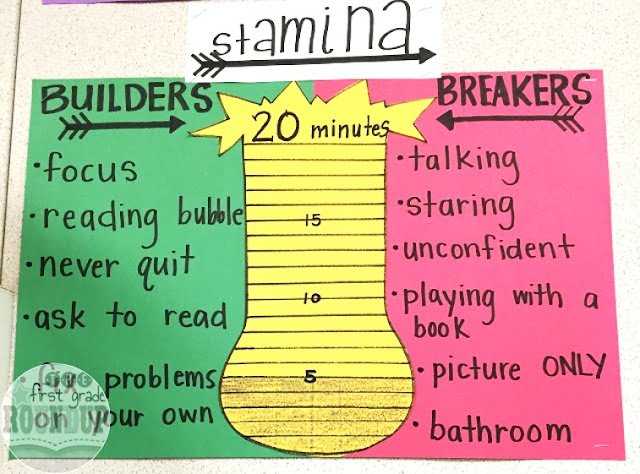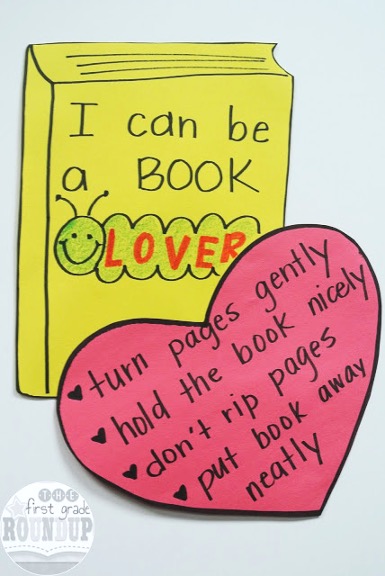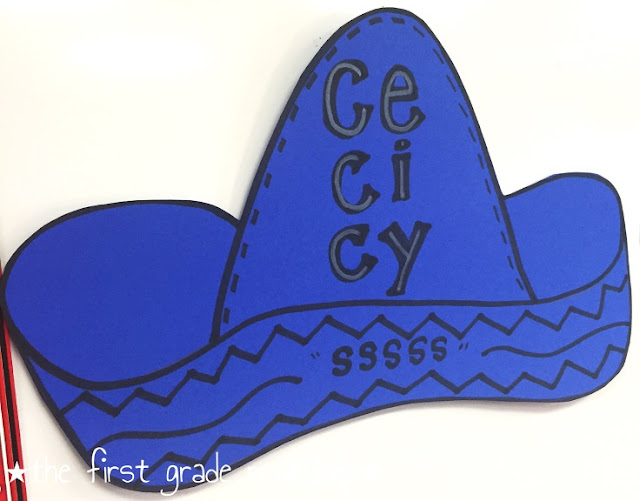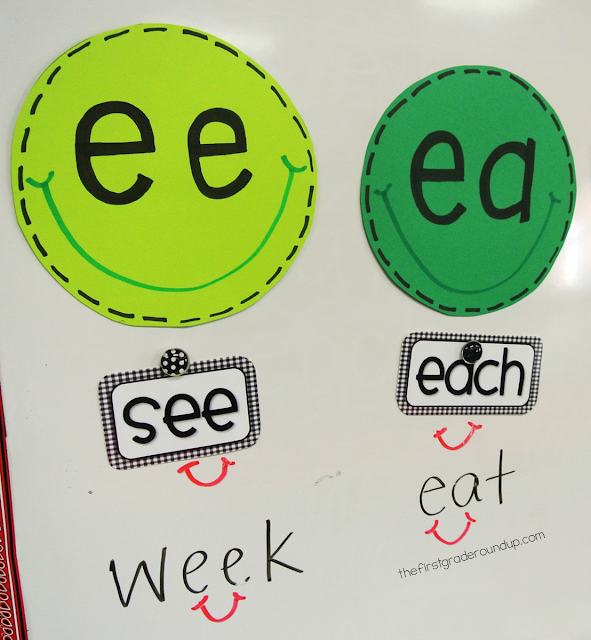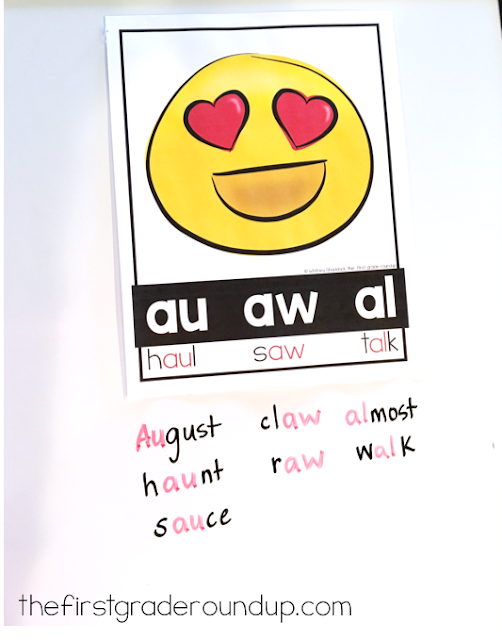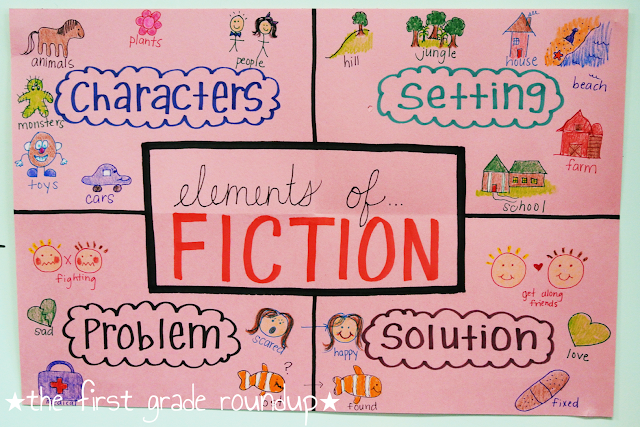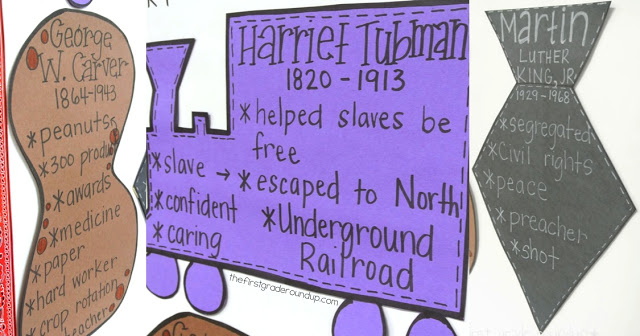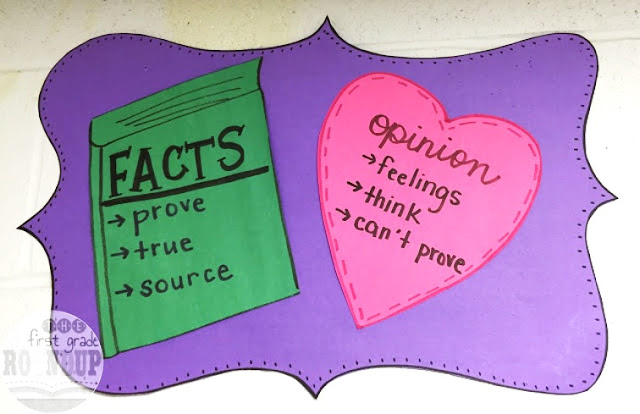I love adding more visuals, and using unusual shapes, colors, or designs to help my littles find them in the room and actually use them!
Reading anchor charts are different for me because I have some that are whole group charts and some that I make as "mini" anchor charts and store in my guided reading folder for that group and just get out for that group during small group instruction.
Here's a look at some of my favorite reading anchor charts.
Building Great Readers
At the beginning of the year, it's important to set the expectations for read to self time and how readers will "behave" in our classrooms during the year!I love talking about our reading stamina! This takes up the first few weeks of our reading time as we are practicing learning to read to ourselves quietly. We use this chart to not only talk about appropriate reading behavior, but also to set a beginning of the year goal for read to self time.
You can see on this chart that we were only up to 5 minutes of read to self time at this point. I usually start with 1 or 2 minutes depending on my class and we increase 1-2 minutes each day. I set my timer and they read. If I see any "stamina breakers," we stop, come to the carpet, talk about it, and return to our reading spots to try again. We get two tries to be able to color in our stamina chart and meet our minutes goal for the day! They love this challenge and it's super easy to refer to throughout the year!
This anchor chart sits in our classroom library and is one we make at the beginning of the year as we learn how to take care of our books!
Phonics Anchor Charts
I love making our own anchor charts for some of our tricky phonics sounds. This is an example of our soft c anchor chart. We sing (and dance!) the Mexican Hat Dance song with this sound, so that's why I have a hat shaped chart! (Ex: ce, ci, cy, /s/ /s/, ce, ci, cy, /s/ /s/, ce, ci, cy, /s/ /s/, ce, ci, cy, /s/ /s/)
Ee and ea are the smile sounds in my classroom, so I made smiley faces for these sounds and we sorted some of our sight word cards under them and wrote our own new words underneath!
And when I just don't have enough time to make an anchor chart from scratch, these emoji phonics charts are easy to print and use!
Fiction Anchor Charts
This chart is an oldie, but goodie. I make it every year and we use it all. year. long. I love drawing it with my kids, but you can get it premade here!Later in the year, we talk about character feelings and how they change. And we talk about all of the ways characters change throughout a story. You can read more about how we use this anchor chart in our lesson with the book, When Sophie Gets Angry, here in this post.
Fiction stories are also great places to look for adjectives in the books. We use this chart when we are beginning to talk about character traits and describing characters in stories! Of course, this chart is also helpful in writing...as many of these reading charts eventually are, but it's a great one to start with in reading! You can find a template for this chart here.

Non-Fiction Anchor Charts
My favorite non-fiction reading charts are our shared research charts. These are so fun to make and I love them because we use them in reading, in science/social studies, and then in writing! In reading, we use these charts to record facts about the person or topic we are learning about. I love making these charts into fun shapes that help the kids remember who or what the chart was about! You can read more about this lesson here.During the second half of the year, we start talking about facts and opinions and read non-fiction books to look for how authors write both opinion and fact sentences in their non-fiction books sometimes!
Soon, we talk more about the kinds of facts authors include and chart interesting and important facts. As we read our texts, we recall facts and decide if they are important (must include) or interesting (fun to include) and list those together. Read more about this activity in this post.
What are some of your go-to reading anchor charts?


